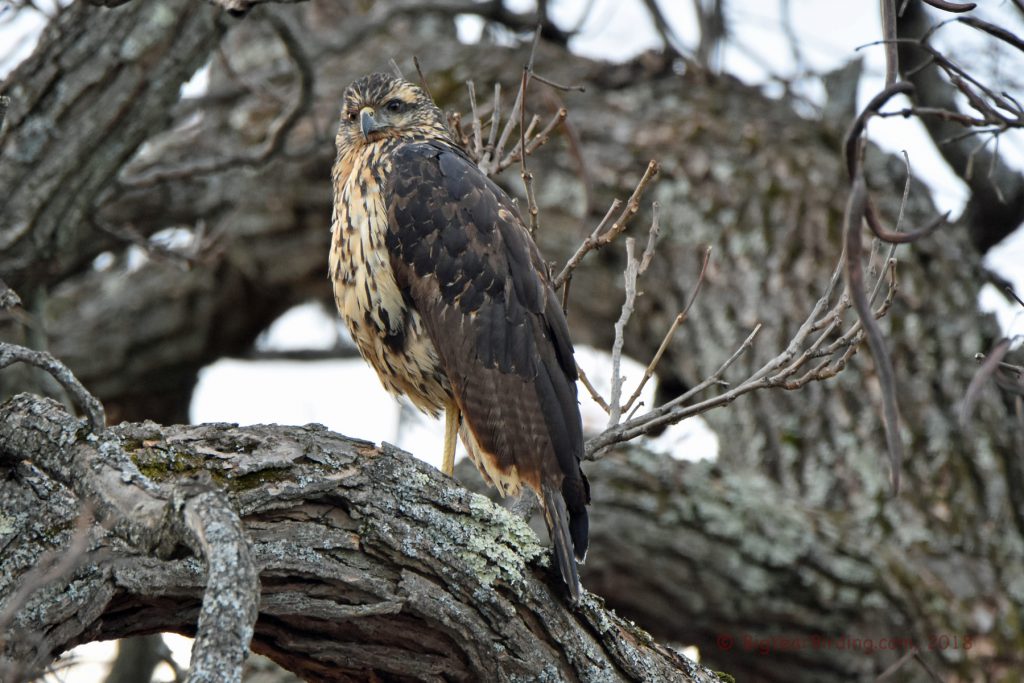
The Great Black Hawk (Buteogallus urubitinga) is a striking raptor species found in the Americas. Adults have a length of 22 to 25 inches, a wingspan of 50 to 57 inches, and weigh around 1.6 to 2.2 pounds. These impressive measurements make them one of the largest raptors in their range. The female is usually larger than the male, with a wingspan up to 60 inches. The Great Black Hawk has a broad, rounded tail and long, broad wings, which aid it in soaring and hovering.

The Great Black Hawk is predominantly black with a gray head, and white or gray legs. It has a very distinctive white band on its tail, which makes it easily recognizable in flight. Its wings are mostly black but have white patches at the base of the primaries, which are visible in flight. Juveniles have a brown head and are mottled with white underneath. The Great Black Hawk has a large, powerful, and hooked beak, which is well-suited for catching prey.
The Great Black Hawk is a resident bird in many areas but also has a wide range and can be found as far north as Texas and as far south as Argentina. They typically prefer forested habitats such as mangroves, tropical rainforests, and wooded savannas near rivers, but they can also be found in more open areas like plantations and agricultural fields. Their range has also expanded in recent years, and they have been observed as far north as Maine in the United States.
The Great Black Hawk feeds on a variety of prey, including snakes, lizards, rodents, and birds. They hunt by perching on a high branch or soaring over the treetops and then swooping down to catch their prey with their powerful talons. They are also known to scavenge from time to time, feeding on roadkill and carrion.

While the Great Black Hawk is generally considered a non-migratory species, some populations do undertake seasonal movements in response to changing food availability. For example, some populations in the southern part of their range may move northward during the non-breeding season to take advantage of better feeding opportunities. However, these movements are generally limited in scope and not as dramatic as those of many other bird species. Overall, the Great Black Hawk is a fascinating and impressive bird species, well-adapted to life in the forests and woodlands of the Americas.
